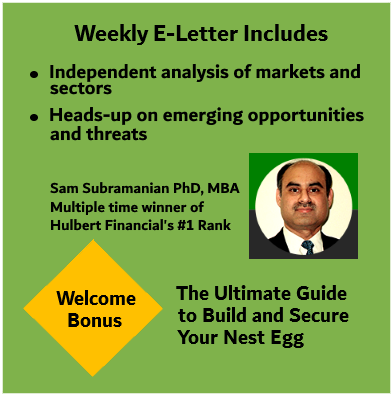Indian stocks are among the better performers this year. In what is turning out to be a downbeat year for the U. S. as well as most global markets, Indian stocks as measured by the S&P CNX Nifty 50 Index (CNXN) are up nearly 8% in U. S. dollar terms.
India’s lower reliance on exports for growth compared to China has enthused institutional investors particularly at a time when developed economies are sluggish. The International Monetary Fund estimates India’s economy to have grown 9.4% in the first half of 2010. Investors recently had no qualms in pushing online travel agency MakeMyTrip’s (MMYT) initial public offering to an 89% first-day gain.
Indian investments can continue to do well in future as the nation’s young, growing, English-speaking workforce strives to increase per capita income and thereby, consumption. India’s economic growth can receive a boost from the government’s plans to spend $1 trillion on infrastructure between 2012 and 2016.
Indian ETFs like WisdomTree India Earnings (EPI), iPath MSCI India Index (INP), PowerShares India Portfolio (PIN), and iShares S&P Nifty 50 Index Fund (INDY) and Indian mutual funds like Matthews India (MINDX), Eaton Vance Greater India (EGIIX), and Franklin India Growth (FIGZX) have taken advantage of investor interest to gather assets. However, when it comes to performance … Matthews India is a clear leader among Indian ETFs and mutual funds with a longer time history.
So, what investment strategy does Matthews India use to lead other Indian ETFs and mutual funds? Should you invest in India with MINDX? For insights to help you make an informed decision, read on …
MINDX Investment Strategy
Consistent with Asia-specialist Matthews Funds’ strategy, Matthews India Fund takes a long-term approach to investing. The fund’s managers Sharat Shroff and Andrew Foster look for Indian companies including government entities with sustainable long-term growth prospects, robust business models, strong management teams, and reasonable valuations.
While MINDX uses the Bombay Stock Exchange 100 Index as its benchmark, the fund’s managers are not afraid to deviate from the benchmark. The fund’s fundamental, bottom-up investment process results in holdings across all capitalizations. Large caps like HDFC Bank (HDB), ICICI Bank (IBN), and Infosys Technologies (INFY) however form a meaty chunk of the fund.
MINDX Nuts & Bolts: Fund Performance, Risk, Expense, and Tax Efficiency
Matthews India’s investment approach has worked to its advantage. MINDX holds top honors for 3-year returns among all mutual funds in the Pacific/Asia ex-Japan Stock category.
Matthews India – MINDX vs. Benchmarks
Item |
MINDX |
Category Avg. |
MSCI EAFE Index |
|
3-Year Annualized Return, % |
9.39 |
2.24 |
-9.16 |
|
Standard Deviation |
42.37 |
35.61 |
25.58 |
|
Expense ratio, % |
1.27 |
1.98 |
1.41 |
|
Portfolio turnover, % |
18 |
109 |
103 |
Category metrics for Pacific/Asia ex-Japan Stock Funds
Source: Morningstar
In terms of risk, MINDX is on par with other Indian mutual funds like Eaton Vance Greater India and JPMorgan India Select (JIDSX). That however does not say much since India’s stock market is notoriously volatile. Matthews India investors should note that the fund is about 20% more volatile than the average Pacific/Asia ex-Japan stock fund and 65% more volatile than the MSCI EAFE developed market benchmark.
From an expense perspective, no load Matthews India compares favorably with its peers.
Looking at tax efficiency … Matthews India fund managers focus on long-term growth. The fund’s 18% portfolio turnover is far less than that of its peers. Capital gains distributed by MINDX can however be quite lumpy over time. Prospective new investors in MINDX should note that the fund has capital gains exposure. As such, investors are liable to incur capital gains taxes on profits previously earned by the fund.
Using MINDX to Invest in India
India has the potential to grow rapidly in the coming years bucking global trends. However, investors in Indian stocks face some long-term risks and have to deal with high volatility.
Lack of stability in governmental policies and the periodic ebb & flow of funds from foreign institutional investors can spike volatility in Indian stocks. From a domestic consumption perspective, inflation is a key risk that can sap purchasing power. The susceptibility of India’s agricultural output to the vagaries of the monsoon can turn inflation up on a dime. High inflation can also become a secular trend if India falters in infrastructure development.
Investors looking to invest in India will find Matthews India fund a sound option. Even though MINDX stands tall among Indian mutual funds and ETFs, the high volatility of such investments makes them appropriate only as a satellite holding for risk-tolerant investors with well-diversified portfolios. Thematic investors and investment style rotators will also find Matthews India Fund MINDX a worthy selection when seeking focused exposure to Indian stocks in their portfolios.

 Sick buying high & selling low? Fed up of the fees you pay? Tired researching investments? End your financial pain now. You have the opportunity to
Sick buying high & selling low? Fed up of the fees you pay? Tired researching investments? End your financial pain now. You have the opportunity to 

 DEC. 1993 to DEC. 2023
DEC. 1993 to DEC. 2023





